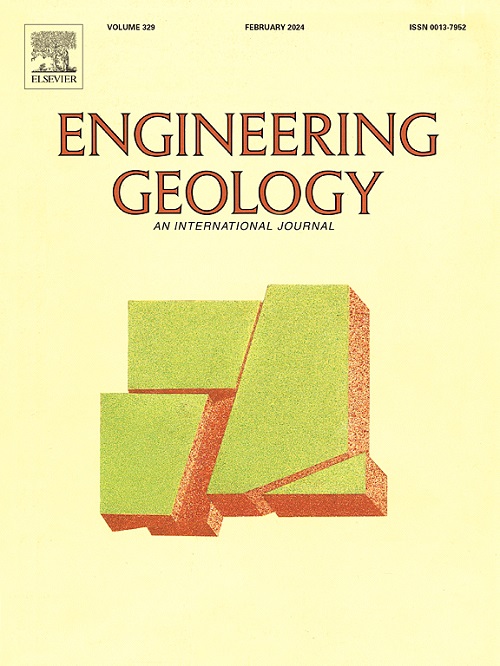Water reactive polyurethane grouting for deep vadose zone contaminant immobilization
IF 6.9
1区 工程技术
Q1 ENGINEERING, GEOLOGICAL
引用次数: 0
Abstract
Contaminants in the deep vadose zone (DVZ) pose a long-term threat to groundwater, human health, and the environment. Polyurethane grouting is a type of chemical grouting that is potentially advantageous in immobilizing contaminants in DVZs. Polyurethane resin has low viscosity that makes it feasible to penetrate and fill the pore space between fine particles. In this study a series of laboratory pressure grouting and leaching tests were conducted to simulate and assess the effectiveness of polyurethane grouting for immobilizing contaminants in DVZs. Soil with fine particles was prepared with 127I (as iodide) that served as a non-radioactive surrogate for radioactive 129I. After grouting and curing, leaching tests were used to measure and compare contaminant diffusivity and leachability index values. Additionally, changes in porosity and saturated hydraulic conductivity of grouted soil were measured. X-Ray Computer Tomography (XCT) results showed that the cured polyurethane was distributed nearly homogeneously and approximately half of the voids were filled with cured polyurethane. Grouting reduced the saturated hydraulic conductivity of soil by 37 %. The effective diffusivity decreased by more than 80 % as compared with the ungrouted soil. The leachability index of the grouted soil was 6.5; meeting the criteria established by the U.S. Nuclear Regulatory Commission (NRC) standard. The results obtained in this study provide a valuable assessment of polyurethane grouting for iodide immobilization in the DVZ and indicate this approach may be a viable method for contaminant remediation in DVZ soils.
求助全文
约1分钟内获得全文
求助全文
来源期刊

Engineering Geology
地学-地球科学综合
CiteScore
13.70
自引率
12.20%
发文量
327
审稿时长
5.6 months
期刊介绍:
Engineering Geology, an international interdisciplinary journal, serves as a bridge between earth sciences and engineering, focusing on geological and geotechnical engineering. It welcomes studies with relevance to engineering, environmental concerns, and safety, catering to engineering geologists with backgrounds in geology or civil/mining engineering. Topics include applied geomorphology, structural geology, geophysics, geochemistry, environmental geology, hydrogeology, land use planning, natural hazards, remote sensing, soil and rock mechanics, and applied geotechnical engineering. The journal provides a platform for research at the intersection of geology and engineering disciplines.
 求助内容:
求助内容: 应助结果提醒方式:
应助结果提醒方式:


